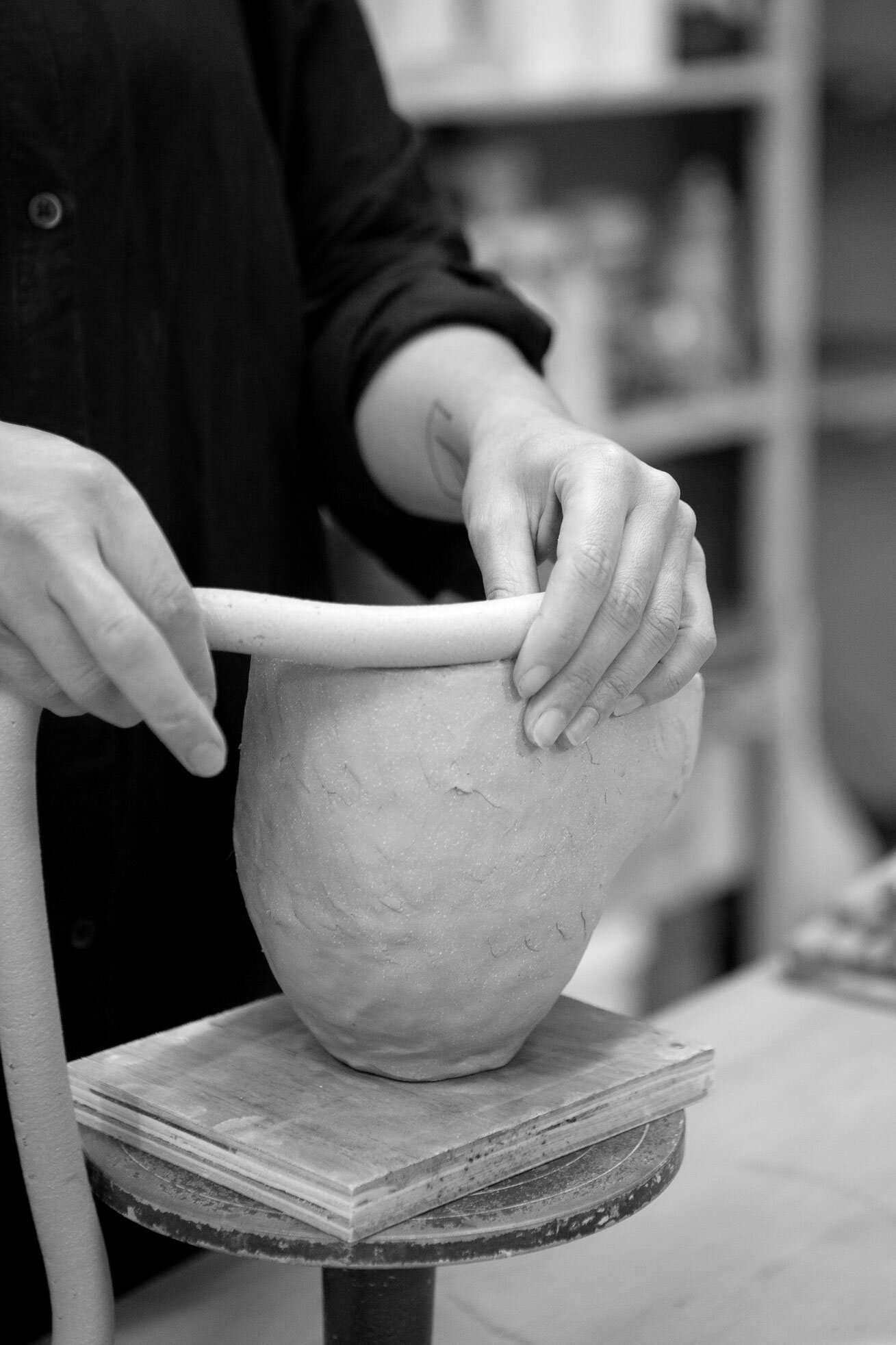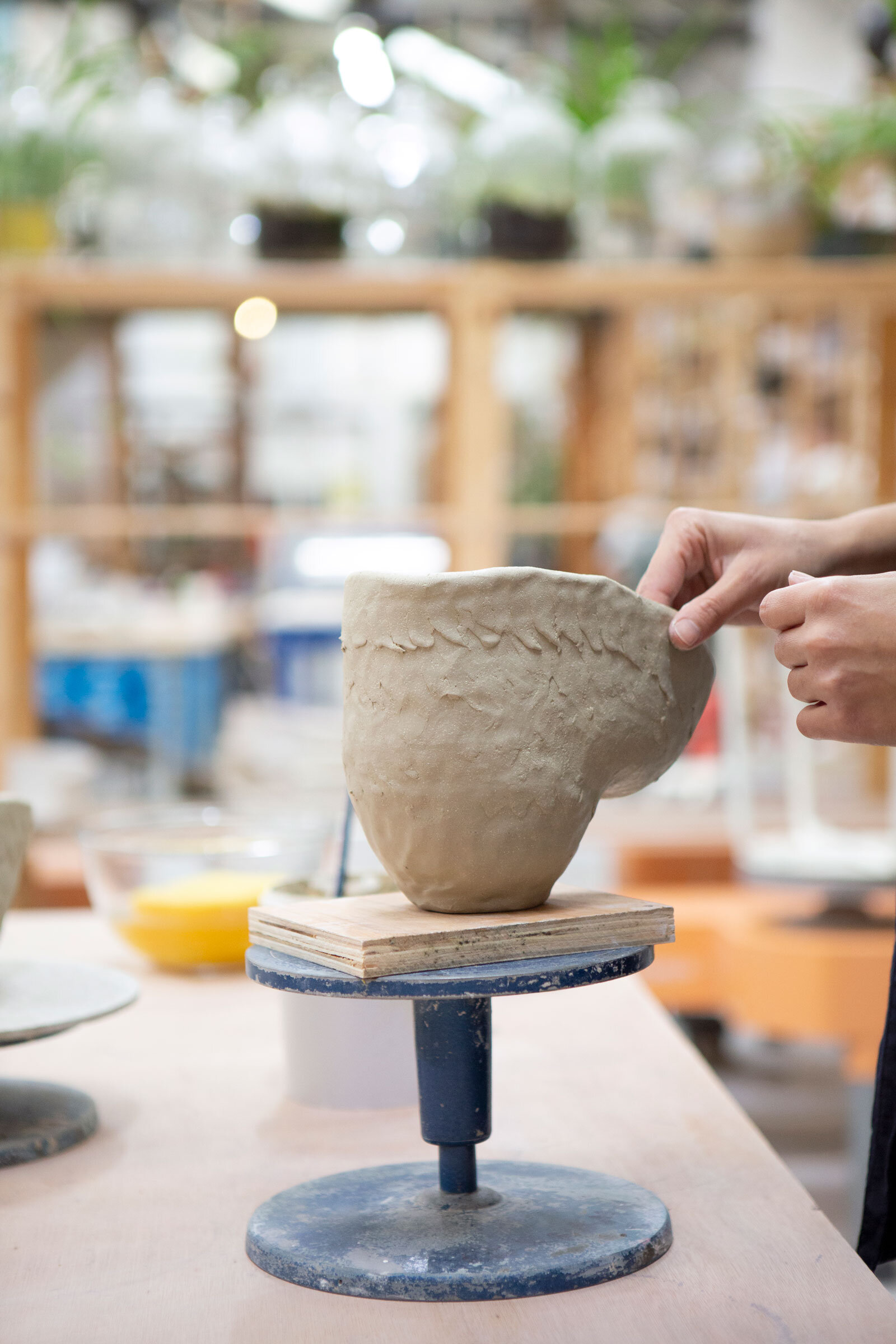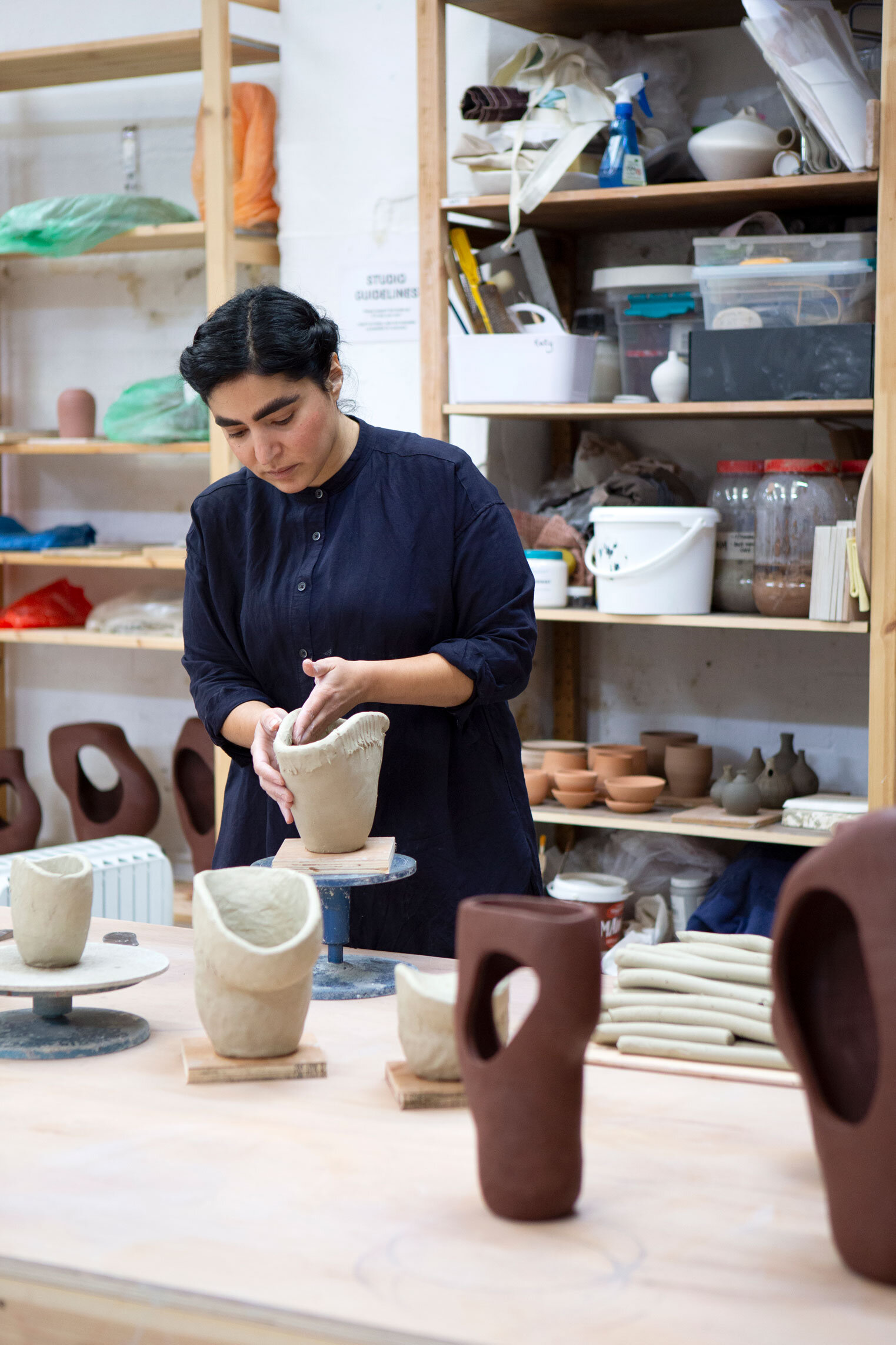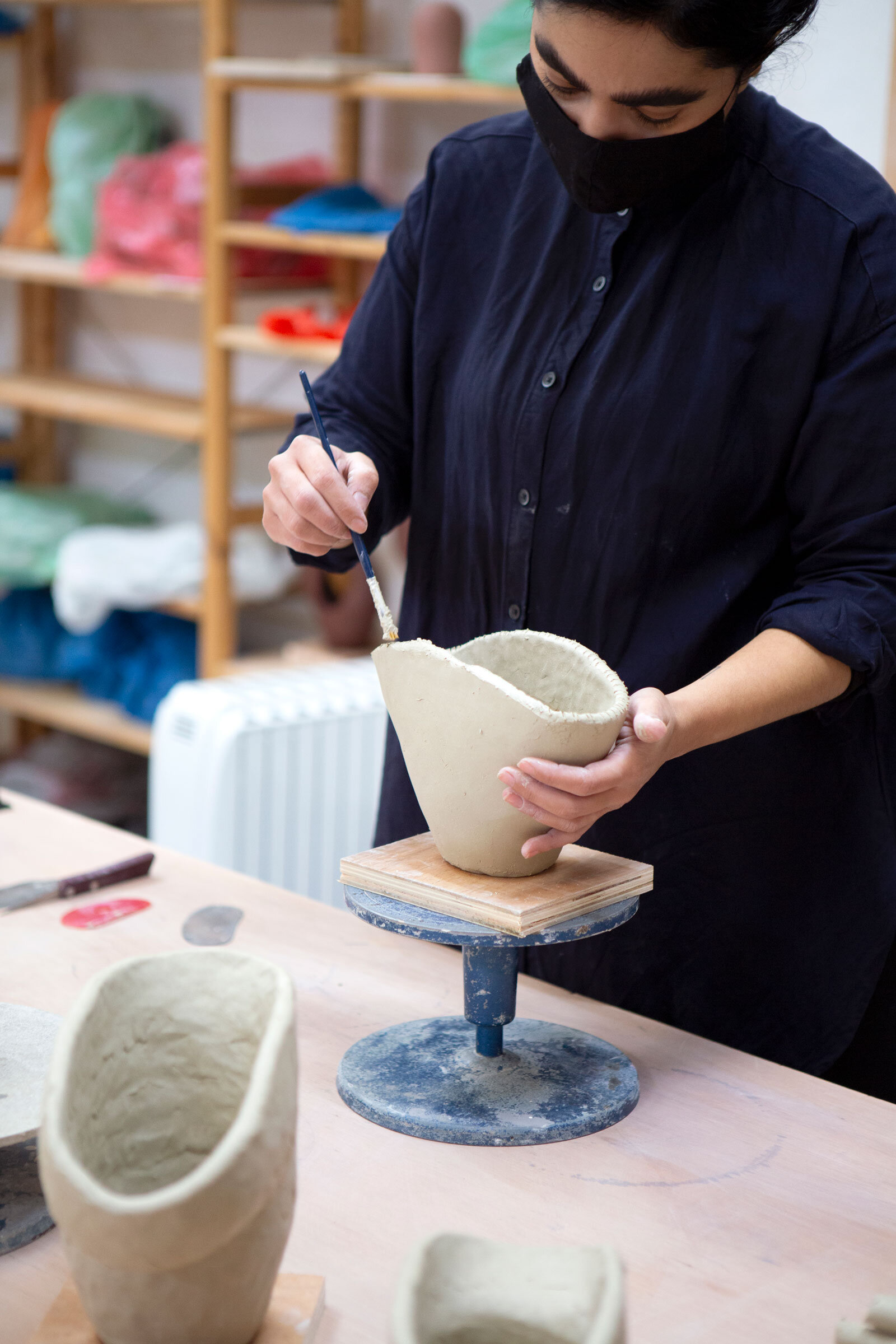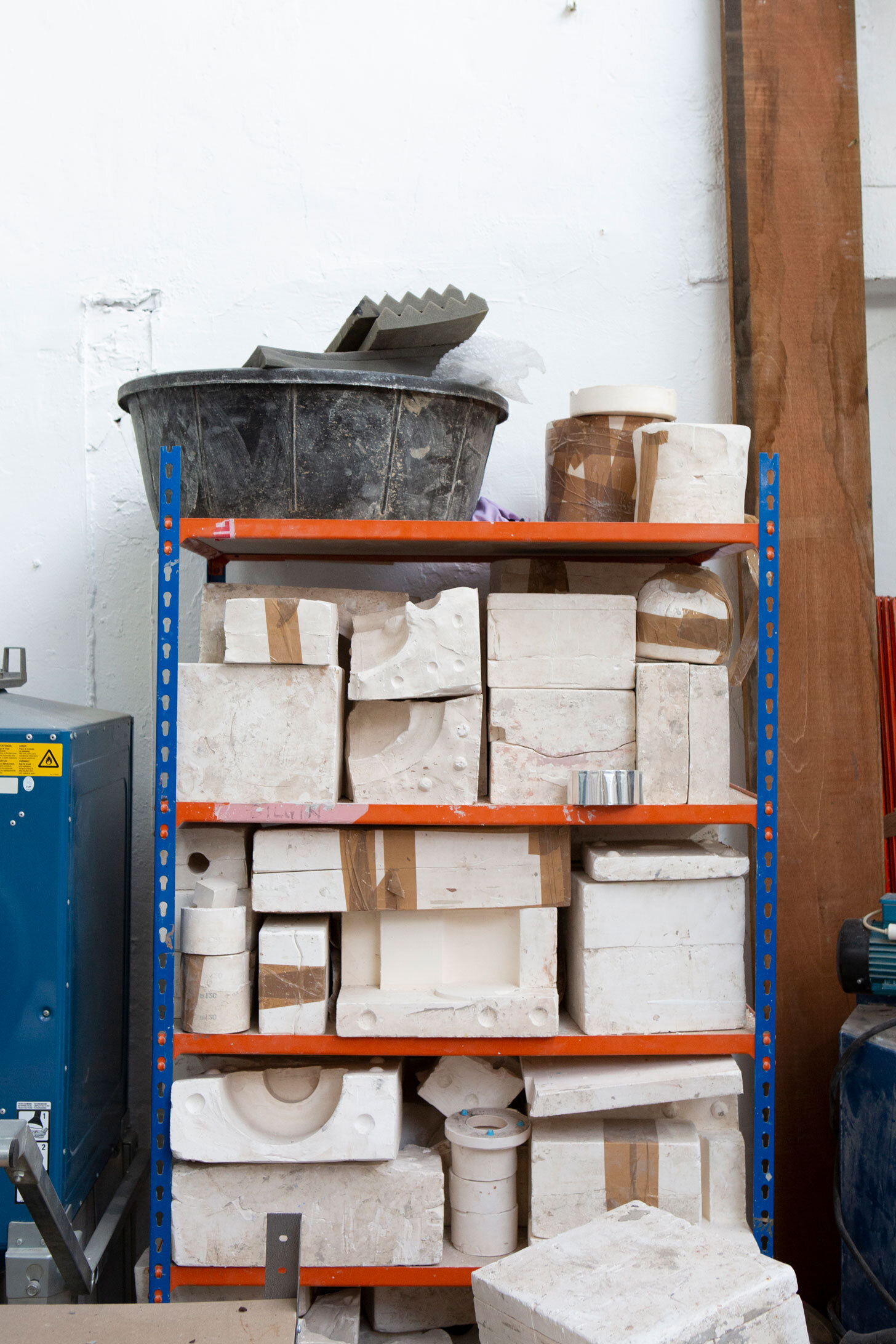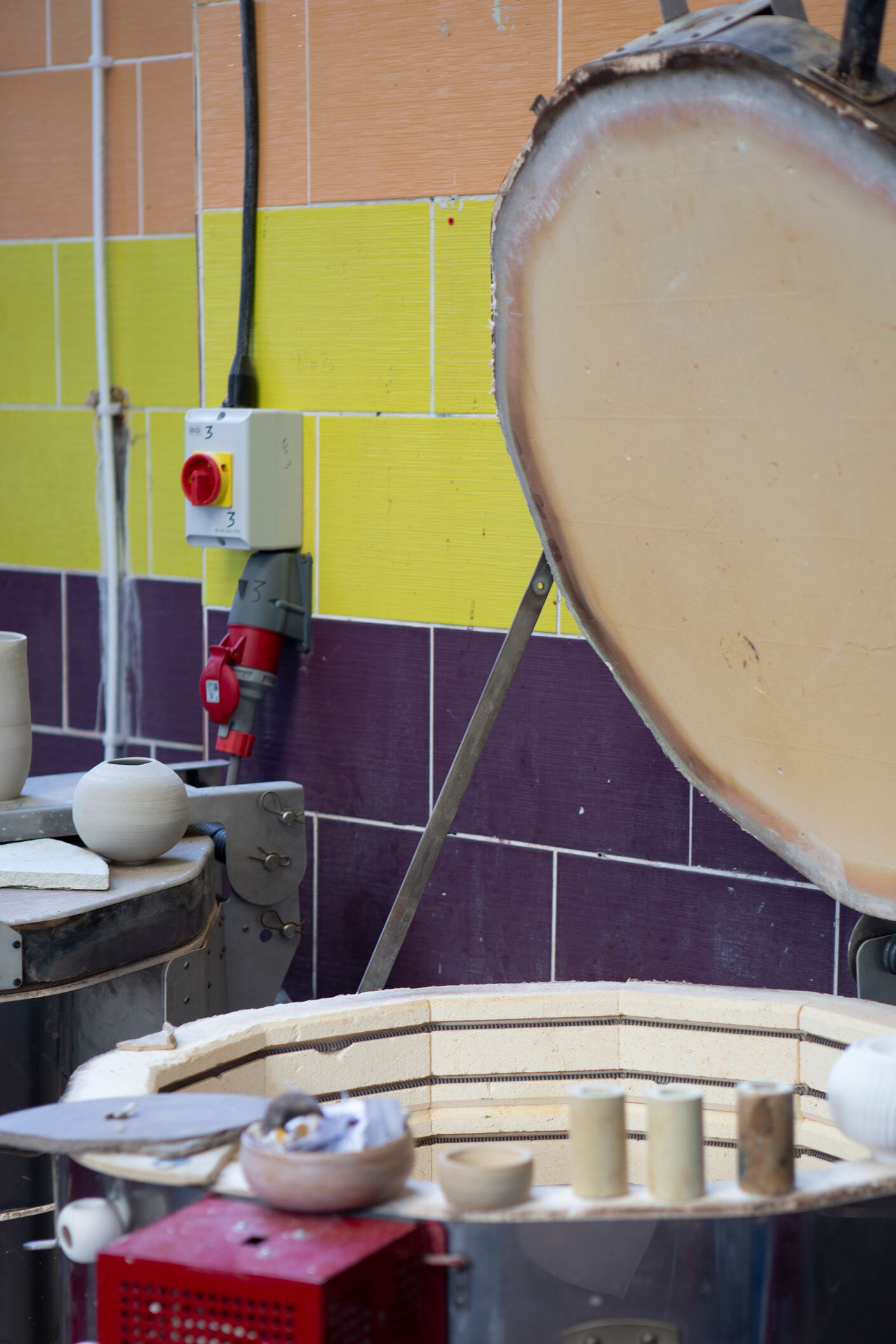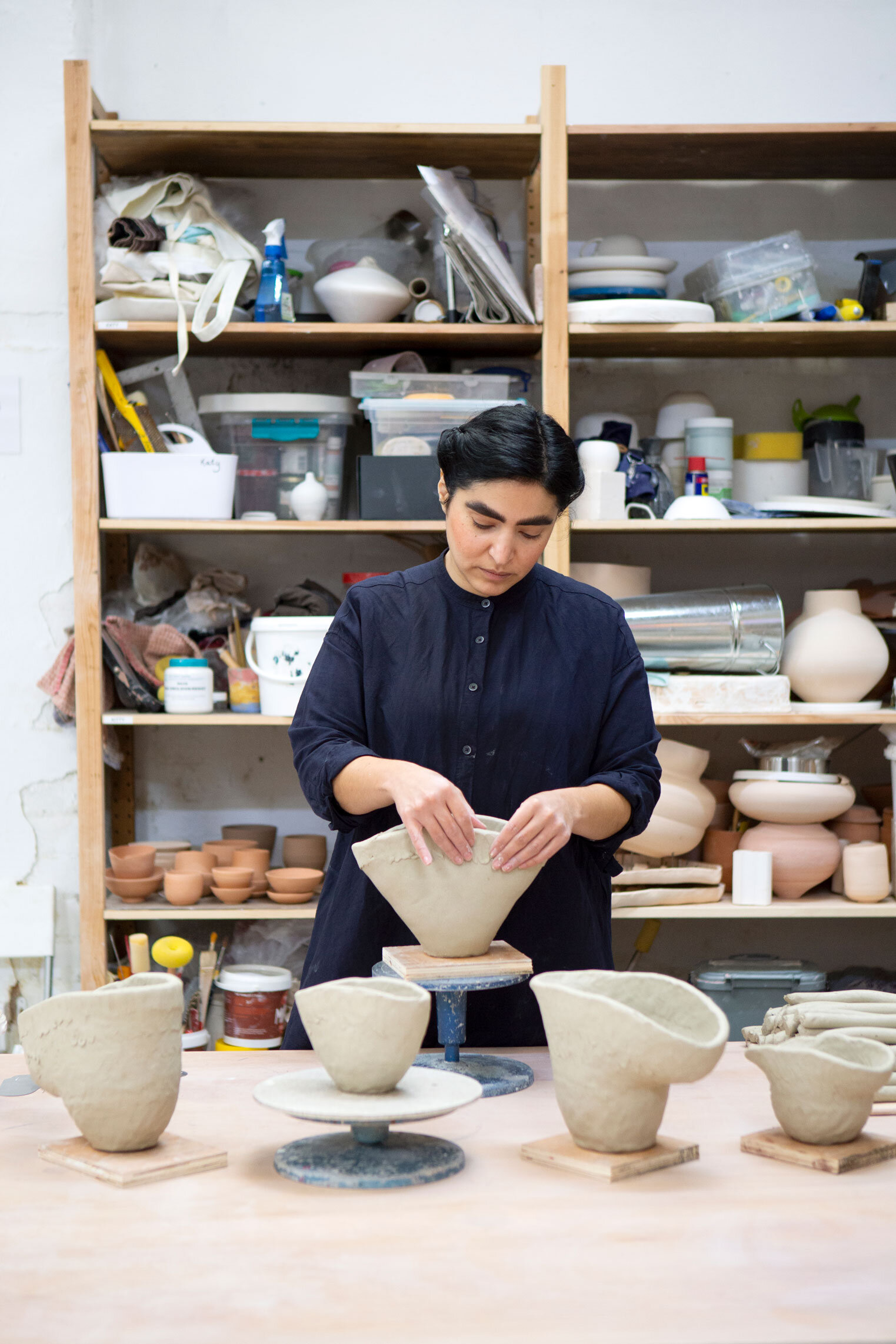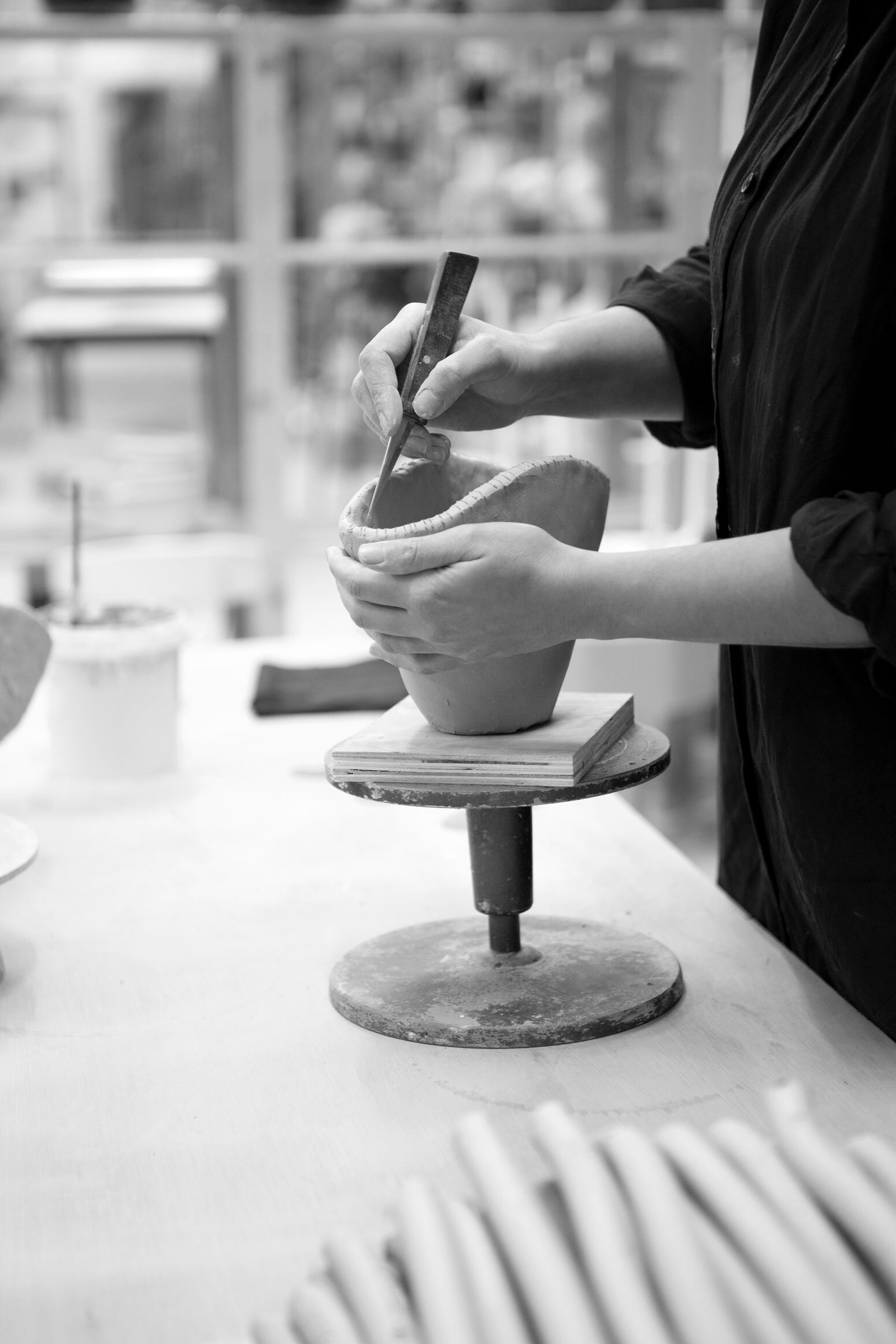The Clay Assemblage explores identity and belonging through her otherworldly sculptural forms
London-based graphic designer and art director Bilgin Bernard creates ceramics under the alias of The Clay Assemblage. Her body of work includes a number of functional objects and hand-built sculptures, intended as ongoing explorations of the artist’s interaction with clay. Her recent (Earth) In Isolation series examines identity and space, communicated through a collection of extraordinary stoneware structures.
Starting her ceramicist practice in 2019, Bernard initially intended to create ceramics led by people sharing moments around a table. However, during last year’s first lockdown she began to utilise clay as an escape from her daily routine and screen-based design work. Working intuitively without a set purpose, the artist was able to take a mediative approach to creativity allowing underlying themes of belonging and isolation to present themselves in the work.
Known for her textural pieces, her ceramics embody the organic materiality of clay and its malleable nature through their unglazed surfaces and twisted forms. Each sculpture offers an insight into the ceramicist’s unique perception and curiosity for the world, revealing new hidden details with each glance.
She reveals her work “aims to celebrate the natural, inherent texture of the clay, with its honesty in imperfections and irregularity.”
“The sculptural pieces I work on are rarely planned and are created more intuitively, there is a certain flow to them because of that.”
“I make pieces that are created to last and to be passed down to subsequent generations.”
Working from Cernamic, a shared open-plan studio space in northeast London, the ceramicist explains how being immersed in the local ceramics community encourages her personal practice.
“In ceramics, people tend to be much more open about the sharing of knowledge and pushing each other to try new things out, there is something about clay that connects people instantly. The studio is set up in a way, that encourages everyone to explore and push possibilities with clay, so although we all work so close together, our work couldn’t be any more different.”
In contrast to her freelance design role specialising in graphics and art direction, Bernard enjoys the expressive outlet offered when working with ceramics. She mentions how being a designer provides her with a certain stance on things, enabling her to be in a “constant position to find visual solutions for other people.”
“You have the chance to learn about different topics every day. So because of that you always keep an open mind and grow in many ways, that are often unexpected.”
“I think working with clay in a three-dimensional way, is such a different experience from my everyday work, which is mostly on a computer on mostly two-dimensional projects.”
Bernard considers herself to be fairly new to the world of ceramics, having only started properly hand-building with clay within the last few years. She reveals her initial feelings regarding working with the medium and the defining characteristics that have encouraged her to continue.
“The first time I touched clay, I immediately felt a connection to the material. It was raw and natural and more so it felt instantly real, something that exists without you being there and will still be there when you’ve long gone.”
“When you open a fresh bag of clay, you can feel the body of work is already there and waiting for you to shape it. I don’t think I had the same feeling with any other materials I’ve ever used.”
The artist’s (Earth) In Isolation series of sculptures were born from a period of experimentation during the UK’s first lockdown. She spent time each day allowing herself to become fully absorbed in the process of shaping and moulding clay without an intentional end goal. Making the pieces became a therapeutic task for Bernard that demanded patience but provided solace amidst uncertain times.
“I started to work on my (Earth) In Isolation series during the first lockdown as a response to my personal experience at this time. There was a sudden loss of purpose and a slowing down, that weighed down on my mental well being.”
“I started to hand-build with clay for the first time, to try and do something for myself. Everything seemed to suddenly make sense and I couldn’t build quick enough for the ideas that were flying into my head.”
Having experienced growing up in Germany as a first-generation child of Kurdish migrants, familiar feelings surrounding identity and acceptance were brought to light as the artist spent the first lockdown in her London flat.
“I felt an instant connection between being in a confined space and my experience growing up as a child of migrants in Germany. I found myself exploring the meaning of space and identity all over again and thinking about my own identity within the boundaries of society.”
“I think migration very much plays an important role in any part of my life, it’s nothing I can separate from me in any way. Growing up and feeling like not belonging, not having any roots does make you different from everyone else in your environment. I struggled for a long time to sit in-between those different worlds and find my own identity.”
“Not too long ago in world history, Kurdish people were nomads, coincidentally I felt many times in my life like a nomad too. I think this and other areas of my life, certainly has shaped my work and how I approach new projects.”
Bernard explains how she predominantly takes inspiration from her surroundings, including her immediate environment in London, noting the city is “a place of constant change that gives me a lot of energy and very much influences my creative process.”
She also admires the work of renowned land artists including Richard Serra and Michael Heizer, often observing and referencing their work via books and exhibitions.
“There are many books I’ve collected over the years that are a constant inspiration for my design work. A few years ago, I came across the land art movement for the first time and that just blew my mind. I knew the work of Richard Serra before, but I didn’t know there was such a vast world out there. The poetic walks of Richard Long and the work of Michael Heizer, so brutal and silent at the same time. It really got me.”
“I had the chance to see some actual real-life work in the Dia Beacon, Upstate New York. Standing in a Serra, feeling small and insignificant at the same time, as well as enveloped and warm. Not sure if laughing or crying would be the best reaction.”
Much like works from the land art movement, Bernard’s ceramic pieces feature elements from the natural world including raw textures and exposed surfaces. However this is typically juxtaposed with negative space and unexpected curves, fluid but controlled in an unnatural shape by an exterior force. She speaks about how these contrasting properties blend together in her approach to experimentation and development.
“The texture of nature made smooth pebble can be as interesting to me, as man-made concrete. What interests me most in ceramics is the honesty of the material, especially when it’s left bare without any glazing.”
“I like to work with materials that bring in a way their own identity with them, each clay presenting a different natural texture. I smooth the surface to a certain extent, but I always aim to celebrate the clay’s original texture.”
“I’m currently refining some of my latest vessels while working parallel on a new collection using a slightly different white clay. I’m also experimenting with adding stains to my clay to get an even richer black. These experimentations will probably seem like quite subtle differences, but I find those refined details important moving forward in my journey.”
As a multidisciplinary artist and designer, its interesting to hear Bernard talk about how her processes for each differs. She recalls her design work as being “research-heavy” and “always on the search to capture the simple truth that lies underneath.”
However in her ceramics practice, she feels able to “break free” from her usual approach, because the connection she has to clay is completely “intuitive from the first moment.”
“I think to have these two different approaches has helped both my design and ceramics practice and it is important for me to have a balance between the two.”
The ceramicist describes how she usually works on a number of pieces at one time, seeing each sculpture as an opportunity to connect deeper with herself whilst understanding the nature of clay.
“Quite often I create my vessels directly from ideas and feelings I have in my head, it’s very rare that I draw and plan my creations. I work on a few vessels at the same time, having them next to each other on the table, there is certainly an influence from one vessel to the other within a collection.”
“I would love to create really big pieces in order to evoke in someone the same feeling that I have when standing in a Serra or looking at a Michael Heizer.”
“With every piece I am creating, there is so much more to learn. How to work better with the material, when to push the clay to its limits and when to stop. I feel what I am doing now is part of an ongoing exploration and research and I am excited to see where this might lead me in the future.”
“There are days when I want to rush into the studio, to immediately grab some clay and start shaping the ideas into reality. Sometimes you’re not in the right mindset, on those days I put on music really loud and start doing chores in the studio; cleaning, organising my clay and just doing things I usually leave for when I have time to do them. Quite often this is enough to bring me into the right mood to create.”
Looking back it’s clear to see how the past year has paved the way for Bernard’s ceramic practice to evolve on a much more ambitious scale. Like many artists, the sudden abundance of time and isolation has enabled her to hone a distinctive and remarkable vision to share with the world.
“The past year has shaped everything into a very different and unexpected direction and I am still trying to grasp the extent of this.”
“I’m always curious to see where my vessels end up with each of them being so personal. It always feels a bit like a piece of me leaves on its own journey.”
Visit the artist page of The Clay Assemblage here.

